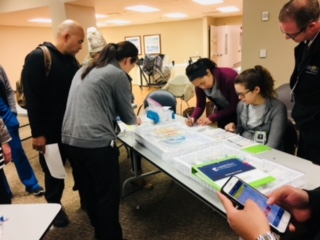Children’s Memorial Hermann Hospital: New Program Takes Stress Out of Pediatric Medication Dosing

Published by: Red Duke Trauma Institute at Memorial Hermann-Texas Medical Center eNewsletter. Summer 2018.
The pressure on medical professionals in a busy emergency room is all the more intense when the patient is a child and medications are required immediately. That is why Children’s Memorial Hermann Hospital – a Level I trauma center equipped to treat children in the most difficult situations – is a leader in adopting the best processes available.
The hospital has trained its professionals in the use of a new system that eliminates the need for physicians and nurses to complete mathematical calculations on the fly when determining drugs and dosages that should be administered to pediatric patients. The new system, known as the Handtevy Pediatric Resuscitation System, allows practitioners to quickly determine the correct dosages based on a child’s age and estimated weight.
The decision to move to Handtevy was a collaborative team effort, including the support from Medical Director of Pediatric Emergency Medicine – Dr. Robert Lapus. “Before the use of Handtevy, some calculations were required that can take away precious time,” said Dr. Lapus. “With it, medications are all pre-calculated and provided in an organized medication book or on an iPhone or iPad.”
When a child is on the way to the hospital or arrives there, entering or looking up an age and estimated weight with Handtevy shows medication doses immediately. The proprietary system also provides practitioners with the best way to administer drugs — via vein, muscle, bone, nose or mouth.
The system was developed by Peter Antevy, a Florida-based pediatric emergency medicine physician who saw a need to speed up the process of making quick determinations on drug dosages for pediatric patients. For years, Antevy recalled experiencing stress and discomfort while using calculations in high-pressure cases – something he found was a shared problem among other physicians. He decided a better method was possible and began developing the system through a company he founded known as Pediatric Emergency Standards, Inc.
To date, Children’s Memorial Hermann and representatives of the company have held more than a dozen classes for physicians, ER staff, in-patient pediatric nurses and pharmacists at the various Children’s Memorial Hermann pediatric emergency rooms. Additionally, the system’s portability means that it has benefits beyond the ER setting. Paramedics trained in the system now can use it to provide medications on scene or during transport. When they arrive with the patient, the data – complete with name of medication, amount administered and time stamps – is transferred to the treating clinicians. This allows medical staff to immediately review the pre-hospital treatment to ensure everything went properly and decide whether additional medications may be required.
In addition to training its affiliated physicians, Children’s Memorial Hermann worked with the Houston Fire Department to implement the system late last year. “We saw it as an opportunity to provide training to the HFD’s 550 paramedics and improve pediatric clinical outcomes for our community,” said Jason Gander, Emergency Medical Services Liaison for Memorial Hermann Health System. “The feedback from the crews has been extremely positive, and their confidence with treating children has improved.

